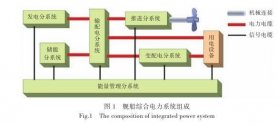Uh I did no such thing. The problem of supply demand matching in electrical power engineering is well documented and is why grid scale energy storage is still an unsolved question. The current way to deal with supply and demand matching in civil electrical grids is through generation capability dispatching.It is getting more confusing. I don't even know what you are trying to say now.
EMALS release the high power during launch, it draws lower power over a longer time from the grid. So there is difference of powers.
Steam reservoir releases high power during launch, it draws steam over a longer time from the boilers. There is difference too.
Electrical energy is just like heat energy in steam. Steam reservoir acts exactly like flywheels in EMALS. The amount of heat energy released during launch is the high instantaneous power, the drawing of heat energy from the boilers over a longer time is the continuous power.
matching the load is the work of the flywheels which are energy storage. The steam system has the steam reservoir which is another type of energy storage.
As said above, in steam catapult the reservoir is doing the same job as matching different load.
of course not, because there is no electrical energy to begin with.
So there is still energy to store. What is the difference then? You store different type of energy by different means.
There is in steam storage as explained above. Flywheel charging between launches is like you accumulate and store steam between launches. Both will draw portion of energy from the source.
Neither is it any easier for any other type of heat engines. This is actually proven by all types of power generation plant, include the GT powered Type 45.
You can not indefinitely store steam. It will cool over time loosing energy. Flywheel on the other hand loose energy in a slower rate, therefor able to store energy for a longer time.
Steam is a physical media, it stores energy in the form of excited molecules. Flywheel is a physical media, it stores energy in the form of rotating momentum. Electricity is the movement of electrons. It is not energy but the phenomenon of energy transmission. I have a feeling that you equated Steam to Energy and Electricity to Energy, therefor the confusions.
Flywheels are great but you previously quoted base load cruising power demand as 30% of peak. There is no electricity grid in the world where anywhere near 70% of peak demand can be stored. Every electricity grid in the world uses demand following and generation dispatch, not storage, to balance out supply and demand. Proof: there are no flywheels at 500 MW commercial power plants to store energy for peak demand.
Steam energy storage does not have such supply demand matching problems. You can add steam to a reservoirs and it doesn't have to be matched by consumption. I'm not sure how to be more clear on this.
My questions come from this point of view, comparing the carrier electrical grid to a commercial civilian grid of equal generating capability. If this is something that is inappropriate then I have nothing to say.
Here are some resources about generation dispatch:

